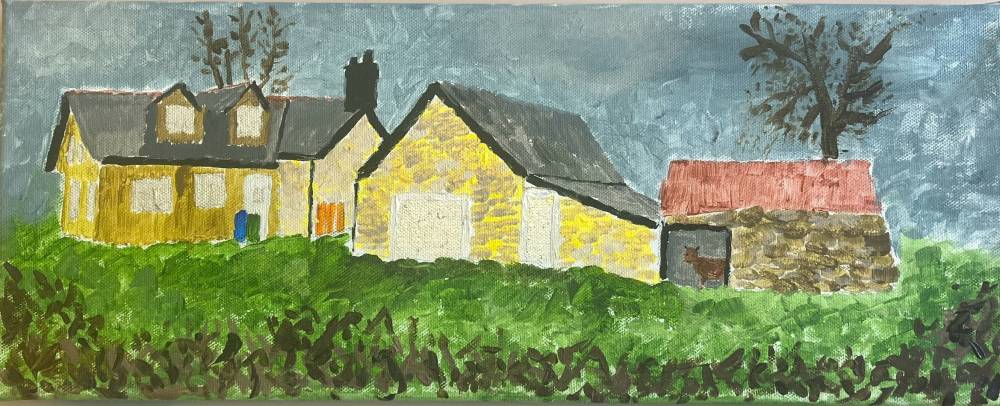Corriebeg Cottage
Painting of a group of buildings. Modern two storey cottage to the left of frame, workshop and storage in the middle, a byre with a cow and corrugated red iron roof to the right, backed by an oak tree with greenery in the foreground.
uhi west highland
Corriebeg Cottage
Land use in the Scottish Highlands has changed over the decades. Originally this land was used for crofting with rudimentary housing, often small blackhouses. The byre on the right of the picture represents this phase (with an imaginary coo looking out), probably dating from the early 19th century. Also dating from this time are some old field boundaries, now almost indiscernible apart from the lines of mature oak trees (one seen behind the house) estimated to be over 200 years old.
The main cottage was built around 1890 and is rendered stone with walls up to a metre thick, but without damp proofing, a solum or any insulation. According to aged neighbours who helped with the milking, cows were kept until at least the 1950s.
The central buildings were built around the 1950s and were originally tractor sheds and coal and other storage, with earthen floors. The large one was converted into a workshop in the early 1970s and updated in the 2010s to modern standards with a new metal roof replacing the rusty and leaking corrugated iron (still seen on the byre).
There was extensive redevelopment in 2012, with a 1970s extension replaced by a larch clad kitchen, bathroom and upstairs master bedroom, approximately doubling the size.
This plot of land exemplifies a trend which is repeated across the Highlands of being used for crofting, and then cleared for mass agriculture, such as sheep farms, and now in residential use.
As told by Gwyn Moses, Corriebeg, Kinlocheil.
Image: Acrylic on canvas. Artist is Gwyn Jones. This story and image were submitted as part of a collaboraton with the UHI West Highlands Creative Arts program.
